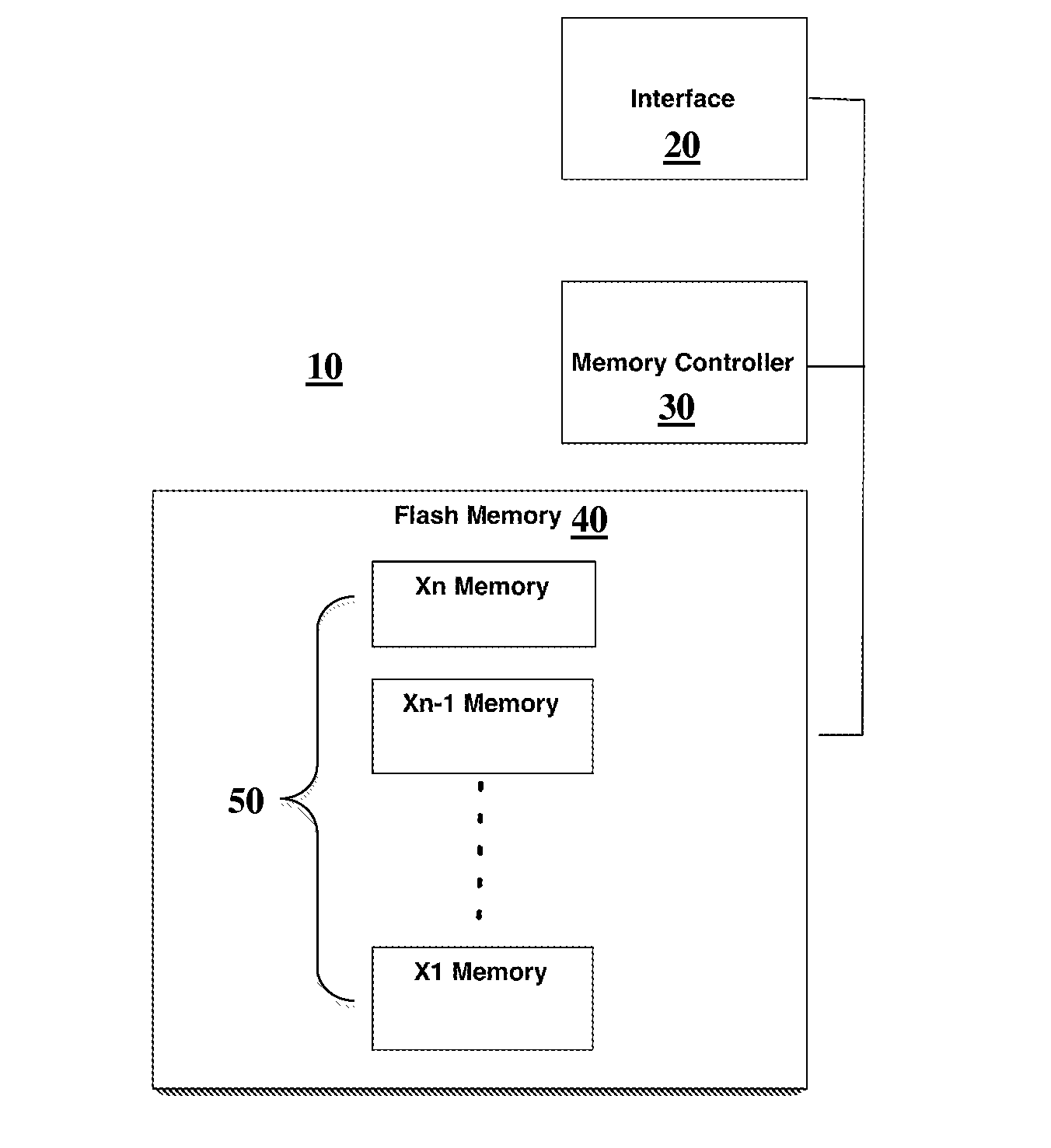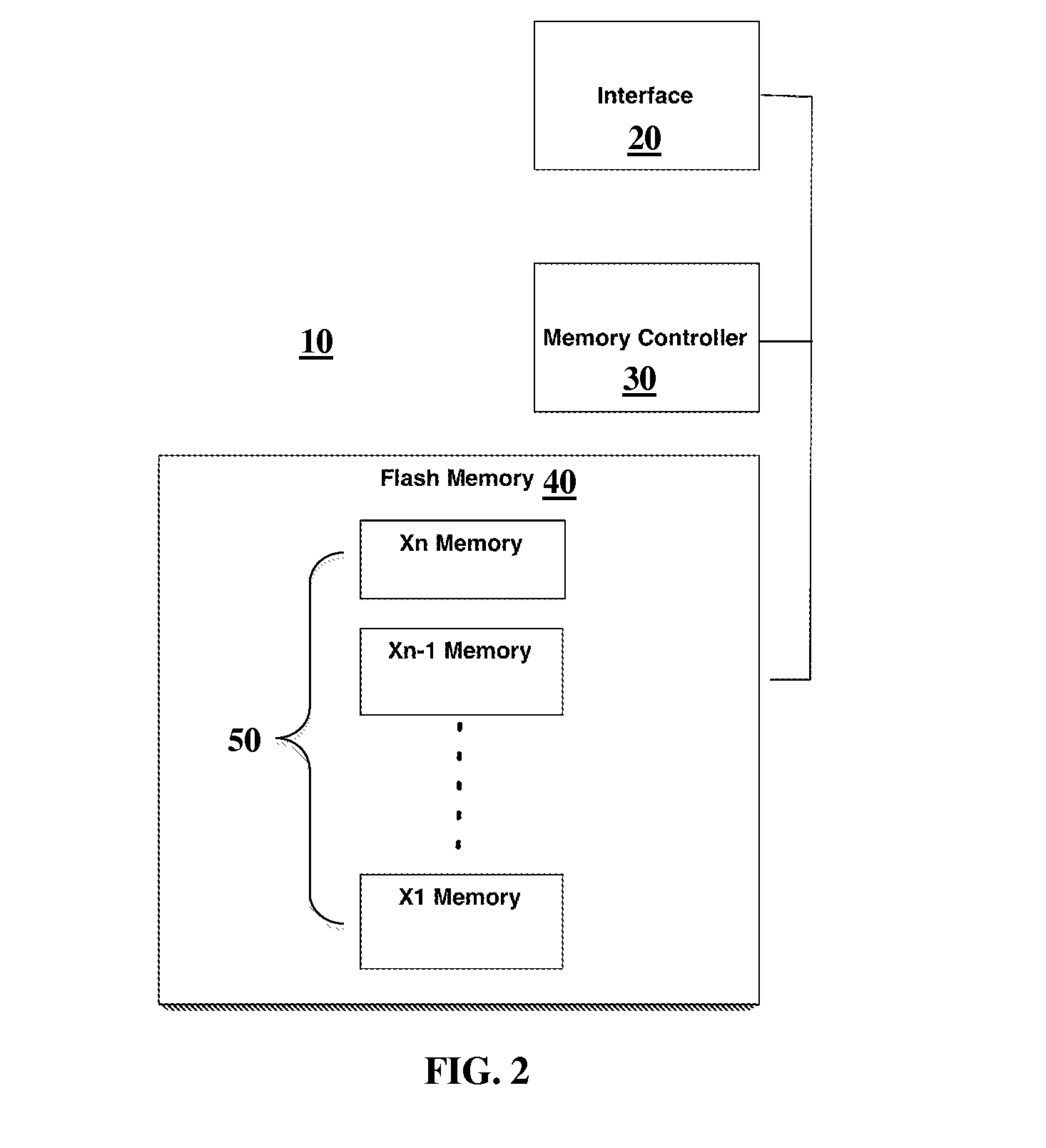System and method for allocating and using spare blocks in a flash memory
a flash memory and spare block technology, applied in the field of system and method for allocating and/or using spare block pool, can solve the problems of flash memory block badness, non-functional blocks in every flash device, and inability to be erased or rewritten with new information,
- Summary
- Abstract
- Description
- Claims
- Application Information
AI Technical Summary
Benefits of technology
Problems solved by technology
Method used
Image
Examples
Embodiment Construction
[0012]Embodiments of the present invention provide systems and methods for using Flash memory by allocating a first portion of spare blocks in the Flash memory as a single level cell (SLC) spare block pool, and allocating a second portion of spare blocks in the Flash memory as a multi-level cell (MLC) spare block pool. Bad SLC blocks in the Flash memory may be replaced with spare blocks from the SLC spare block pool. If the number of spare blocks in the SLC spare block pool is less than a minimum SLC spare pool threshold, then spare blocks from the MLC spare block pool may be re-allocated to the SLC spare block pool.
[0013]Embodiments of the present invention provide systems and methods for using non-volatile memory by allocating N number of portions of spare blocks in the non-volatile memory as N number of multi-level cell (MLCx(N)) spare block pools. Bad MLCx(j) blocks in the non-volatile memory may be exchanged with spare blocks from an MLCx(j) spare block pool. If the number of s...
PUM
 Login to View More
Login to View More Abstract
Description
Claims
Application Information
 Login to View More
Login to View More - R&D
- Intellectual Property
- Life Sciences
- Materials
- Tech Scout
- Unparalleled Data Quality
- Higher Quality Content
- 60% Fewer Hallucinations
Browse by: Latest US Patents, China's latest patents, Technical Efficacy Thesaurus, Application Domain, Technology Topic, Popular Technical Reports.
© 2025 PatSnap. All rights reserved.Legal|Privacy policy|Modern Slavery Act Transparency Statement|Sitemap|About US| Contact US: help@patsnap.com



